| |
|
|
| |
|
VISITS |
|
756000 |
|
Copyright 2013
waypoints.ph |
|
|
Click on any of the images to see the enlarged copy and narratives of the photo.
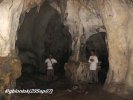
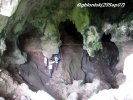
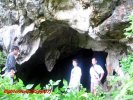
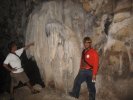
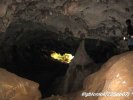
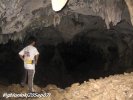
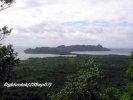
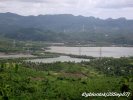
The Sibatiya Cave is located in the mountain at the center of the Pagbilao Grande Island, Pagbilao, Quezon. It is just one of about 75 caves in the area. All of these caves has been explored and exploited for their natural fertilizer � guano or bat shit. Sibatiya is said to be the longest and the only one where you can go through. The name was is to be derived from the basins of water which used to be there before the cave was plundered by guano gatherers. Although there are still remnants that could be found of those basins, most of those disappeared due to the destruction of some stone formations at the bottom of the cave. Some folks also call the cave as �bayawak� and the whole mountain as �halimaw�.
It is always advisable to get one of the local residents as a guide, who will guide you thru the 560m hike to the base of the mountain and then the climb to elevation 100m.
The cave generally runs east to west; hence, we named the two mouths as such. At the east mouth is a nice view of Pagbilao town proper and Mount Banahaw, but lush vegetation prevents an unobstructed snap.
The depth of the cave is approximately 320m. This figure is the straight distance between the two mouths by GPS, disregarding curves and turns inside the cave. But we verified this to be quite accurate when our guide revealed that during the �guano years� four rolls of electric wire (PDX wire at 75m/roll) was used along this length to illuminate the cave using generators.
With two strong halogen lamps, we enjoyed the thrill inside the cavernous chamber. The crystalline stalactites and stalagmites and other odd-shaped limestone formation triggers the imagination. One of the photos shows a monster of a stalactite-stalagmite column. With the disappearance of the cave floors � what was left was a ravine giving a stimulating view of rock formations. As the path thru the cave has been made to disappear by guano gathering (rocks to walk on had collapsed), we also had the thrill of some rock climbing as we had to go down the ravine then climb again to the other side.
As we emerge through the west mouth of the cave, we were told that this mouth was man-made, i.e., excavated for the convenience of the guano boys. At this end is a rewarding view of Pagbilao Chico Island with the famous �Tulay Buhangin�- the location of the original �Pedro Penduko� movie starring Ramon Zamora. Celso Ad Castillo�s R-movie �Isla� was also shot there.
From hereon, we had a lung-breaking further climb to the mountain above the cave which is again rewarded with a view of the Quipot Bridge and its surroundings. To go back to civilization, we needed to go through the rheumatism-inducing descent necessitating the use of all four limbs. (I am lucky to use five because I also used my butt as an effective braking device). The base of the mountain when we reached flat land on our way back is approximately 400meters from where we started our ascent. A final walk of 800meters brought us back to the trek start point.
How to get there:
The trek stark for Sibatiya Cave is along the access road to Pagbilao Coal Fired Power Plant. This road branches out from the National Highway; hence, part of the narrative for a nearby feature �kwebang lampas� is reprinted here:
From Pagbilao, just follow the National Highway going to Atimonan. The first Y-junction, a few hundred meters after KM 146 and just infront of Binahaan Elementary School, is the access road to Pagbilao Coal-fired Power Plant. It is marked by an impressive modern directional sign which looks out of place in a rural setting. So follow that sign which tells you to take the junction to the right. Just a few meters therein will be a railroad crossing without a safety barrier, so stop, look and listen. You will notice that the road's kilometer posts are not related to the ones in the main highway. Be watchful of road humps strategically placed at school zones, barangay centers, pedestrian crossings and dirt road junctions.
The concrete road passes thru Brgy. Binahaan. Then, going across the Spillway over Locohin River will take you thru a winding and rolling road within Brgy. Kanlurang Malicboy. In the vicinity of KM8, you can leave the Island of Luzon without having to fly or to swim, because Quipot Bridge was there to join Brgy. Kanlurang Malicboy in the Luzon mainland and Brgy. Ilayang Polo in Pagbilao Grande Island.
While driving thru the Island, watch out for these landmarks: 1) The high voltage transmission line is about to cross the road at an angle from a steel tower at your right side. 2) There are two successive Welcome Markers at the right side saying �Sitio Litugan� and �Sitio Pi�a�. 3) There are two successive road humps with black and yellow paint. 4) There is a narrow concrete road uphill to your left. Along these landmarks, lies the trek start point for Sibatiya Cave.
Waypoint narrative by: GBLontok 2007 follow GBLontok on Facebook
|
|
|